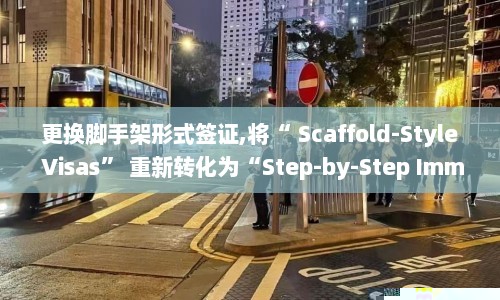Step-by-Step Immigration Permits: A Better Alternative to Scaffold-Style Visas

Immigration has always been a controversial issue, with varying opinions on how to handle it. One of the more controversial methods is the use of scaffold-style visas. These visas grant temporary residency status, but require constant renewal and do not guarantee a path to permanent residency or citizenship. This method has been criticized as cumbersome and unfair to immigrants who are trying to establish a stable life in their new country. A better alternative to scaffold-style visas is the use of step-by-step immigration permits.
What Are Scaffold-Style Visas?
Scaffold-style visas are visas that allow for temporary residency in a country, usually for a set period of time. They are called scaffold-style visas because they require regular renewal, like scaffolding supporting a construction site. These visas may require yearly or bi-yearly renewals, and may have additional requirements such as proof of employment or income. They often do not offer a path to permanent residency or citizenship, leaving immigrants in a state of limbo.
Problems With Scaffold-Style Visas
There are several issues with scaffold-style visas. Firstly, they require constant renewal, which can be a daunting task for immigrants who may not have the resources to keep up with the paperwork and fees. This can lead to gaps in residency, making it difficult for immigrants to establish a stable life in their new country. Secondly, scaffold-style visas do not guarantee a path to permanent residency or citizenship, leaving immigrants in a state of uncertainty about their future in their new home. Finally, the constant renewal requirement can lead to exploitation by unscrupulous employers who use the visa status of immigrants to keep them in low-paying jobs with little job security.
What Are Step-by-Step Immigration Permits?
Step-by-step immigration permits are a different approach to managing immigration. These permits grant temporary residency but also offer a clear path to permanent residency and citizenship. The process involves several stages, with each stage providing more rights and security to the immigrant. For example, the first stage may grant temporary residency and the ability to work, while the second stage may offer more permanent residency and social benefits. The final stage may grant citizenship and all the rights and responsibilities that come with it.
Benefits of Step-by-Step Immigration Permits
Step-by-step immigration permits offer several benefits over scaffold-style visas. Firstly, they provide a clear path to permanent residency and citizenship, giving immigrants the security and stability they need to establish a new life in their chosen country. Secondly, they reduce the risk of exploitation by employers, as immigrants have a clear path to better employment and job security. Finally, the step-by-step process can reduce the bureaucracy and paperwork required for each stage, making the process more manageable for immigrants.
Conclusion
Step-by-step immigration permits offer a more humane and fair alternative to scaffold-style visas. By providing a clear path to permanent residency and citizenship, immigrants are given the stability and security they need to establish a successful life in their new country. The step-by-step process can also reduce the bureaucracy and exploitation often associated with scaffold-style visas. It is time for countries to reconsider their approach to managing immigration and consider the use of step-by-step immigration permits.
